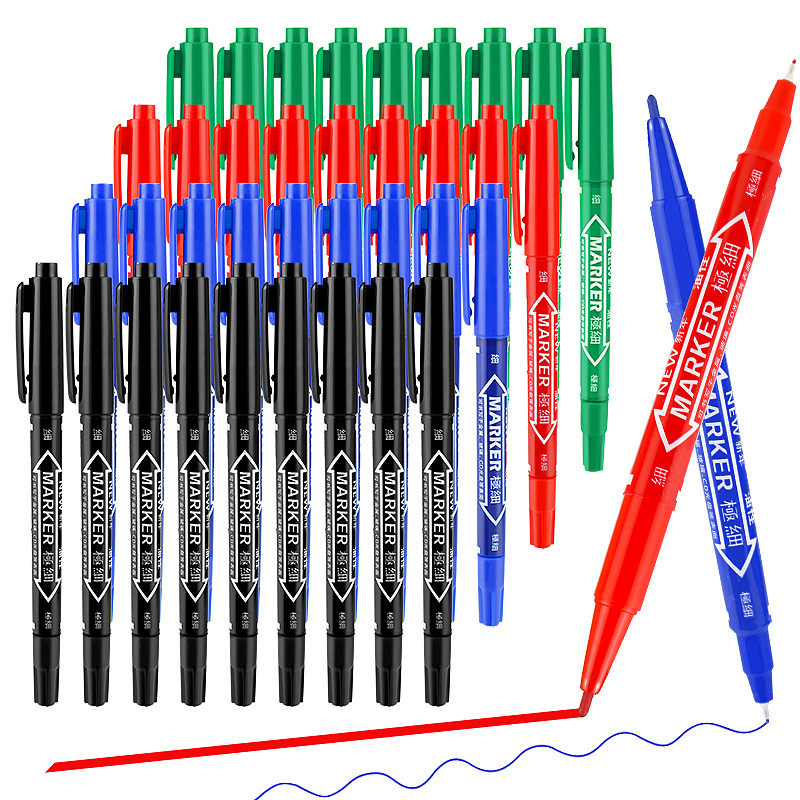The hallmark of modern whiteboard markers lies in their carefully engineered ink formulas. These inks are designed to provide smooth, consistent writing, allowing users to convey ideas clearly without worrying about streaks, smudges, or uneven flow. Whether used for brainstorming sessions, lectures, or presentations, the clarity of the lines is crucial to effective communication.
The ink adheres well to non-porous whiteboard surfaces but can be easily erased with a dry eraser or damp cloth, leaving no residual stains or ghosting. This balance of durability and erasability ensures that whiteboards remain clean and ready for fresh ideas, minimizing distractions during meetings or classes.
Variety Tailored to Diverse Environments
To meet the varied needs of different environments, manufacturers offer a wide range of whiteboard marker types. Low-odor and non-toxic markers are popular in educational and healthcare settings, where air quality and safety are priorities. Ultra-fine tip markers support detailed diagrams and annotations, while broad chisel tips are favored for bold headlines and emphasis.
Specialty markers, such as magnetic and refillable models, have also gained traction, addressing sustainability concerns and offering convenience for heavy users. Some brands provide markers compatible with glass boards, which are becoming increasingly common in modern offices due to their sleek appearance and durability.
Enhancing Collaboration in Hybrid Workspaces
The rise of hybrid and remote work has expanded the use of whiteboards beyond traditional office walls. Interactive whiteboards and digital whiteboard apps are now often paired with physical whiteboards and markers, creating integrated collaboration spaces.
Physical whiteboard markers retain their importance as tactile tools that encourage spontaneous ideation and group participation. The ability to quickly jot down thoughts or sketch concepts in real-time enhances creativity and decision-making, especially during in-person or hybrid meetings.

"Whiteboard markers remain the backbone of effective brainstorming," says Jamie Patel, a workplace innovation consultant. "Even with digital tools, nothing quite replaces the immediacy and fluidity of pen on board."
Sustainability and Innovation Drive Market Growth
Sustainability has become a key driver in the whiteboard marker industry. Increasingly, brands are developing refillable markers and using recyclable materials to reduce plastic waste. Some manufacturers are introducing biodegradable components and adopting eco-friendly ink formulations, responding to the growing demand for greener office supplies.
Technological innovation also extends to ink chemistry. New formulations are improving color vibrancy and longevity, reducing odor, and enhancing erasability. Innovations like quick-dry inks help prevent smudging in fast-paced environments, while anti-ghosting inks keep boards looking fresh after repeated use.
Educational Impact and Classroom Adoption
In education, whiteboard markers are more than just writing tools—they are integral to teaching strategies that emphasize visual learning and interactivity. Teachers use whiteboards to highlight key points, illustrate complex concepts, and engage students through participatory lessons.
Markers designed specifically for classroom use often feature bright, vivid colors and safe, non-toxic ink. They facilitate collaborative learning and encourage student participation, making lessons more dynamic and memorable.
"The right whiteboard marker can transform a classroom," notes Sarah Mitchell, an elementary school educator. "It’s a simple tool that opens the door to creativity and deeper understanding."
Market Trends and Future Outlook
The global whiteboard marker market is forecast to grow steadily over the next decade, driven by rising adoption in educational institutions, corporate offices, healthcare facilities, and co-working spaces. The shift toward hybrid work models and modern learning environments further supports demand for versatile, high-performance markers.
Key industry players such as Expo, Staedtler, and Pilot continue to innovate, offering specialized product lines and expanding into emerging markets. Direct-to-consumer sales through e-commerce platforms have made quality markers more accessible to individual professionals, educators, and students.
Customization and branding are also emerging trends, with companies and schools opting for markers in specific color schemes or branded sets to foster identity and consistency.
Whiteboard markers, though humble in appearance, are vital enablers of communication, creativity, and productivity in diverse settings. Advances in ink technology, sustainability efforts, and design innovation ensure these markers remain relevant and indispensable tools.